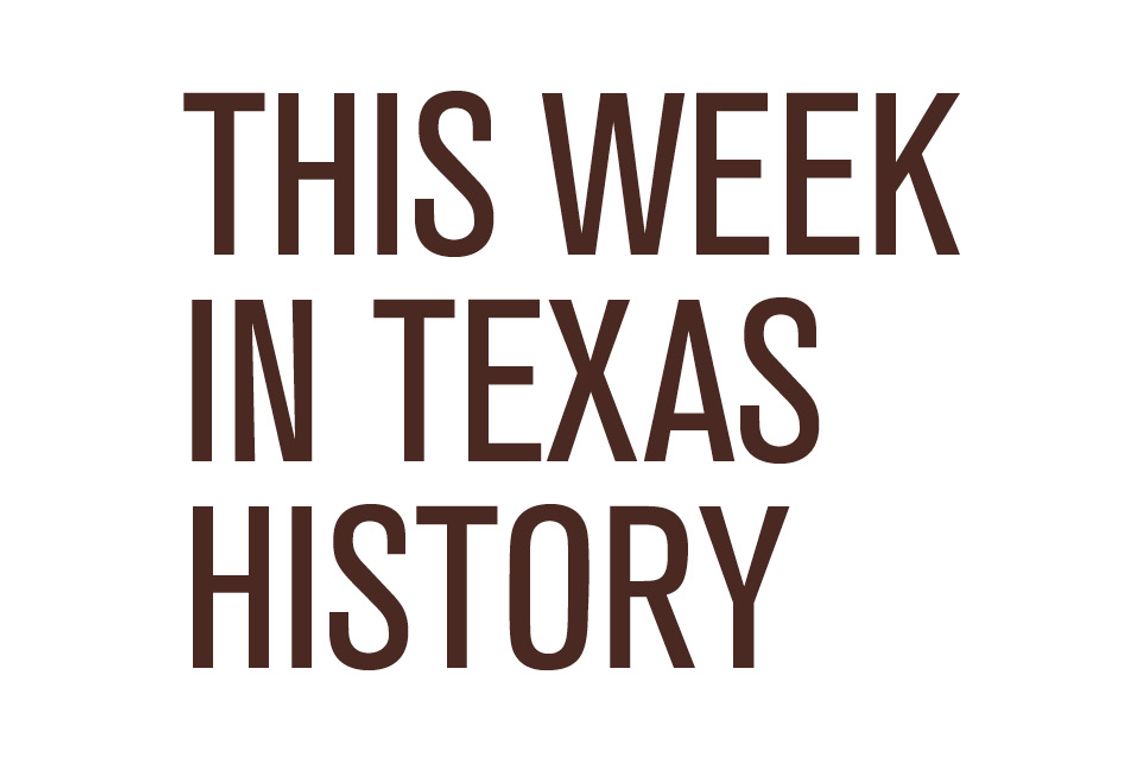By Bartee Haile
Speaking behind closed doors on Dec. 10, 1839, Mirabeau Lamar shared a startling secret with the Republic Congress. Texas’ second president informed legislators that for the past seven months he had been working to make peace with Mexico.
When Sam Houston passed the reins of government to his rival in December 1838, the new chief executive did not think a truce was in the cards. The Mexicans seemed dead-set on retaking the liberated province and punishing the San Jacinto victors. But inside information from south of the border changed Lamar’s mind.
According to well-informed friends, the ousted rulers of Texas were treading water in a sea of crisis. Plagued by pockets of rebellion throughout the huge country and embroiled in a major confrontation with the French, Mexican leaders just might be open to mending fences.
In fact, several credible sources quoted senior officials as saying that under the dire circumstances the time was right to come to terms with the Texans. For Lamar, who opposed merger with the United States, the unexpected news was music to his ears. Texas could never realize its sovereign destiny so long as relations with Mexico remained hostile.
For the momentous mission Lamar chose Barnard Bee, the secretary of state whose bags were already packed for Washington. The diplomat grudgingly accepted the undercover assignment, but his heart clearly was not in it.
Lamar instructed Bee to negotiate and, if possible, to sign a peace treaty based upon two key conditions: recognition of Texas independence and the Rio Grande as the international boundary. If the Mexicans continued to insist upon drawing the line at the Nueces, Bee was authorized to offer $5 million for the disputed land between the two rivers.
Although the envoy received his orders in February 1839, he did not reach Veracruz until early May. By then the golden opportunity was gone because the Mexicans had appeased the French and temporarily quelled the scattered revolts.
The uninvited Texan could not even obtain permission to go ashore. Bee gladly took no for an answer and sailed back to New Orleans only to find a letter from the Mexican secretary of war waiting for him. In an abrupt about-face, the minister wrote that his government was willing to listen to the Lone Star proposal.
To Bee’s relief, he did not have to make the return trip. His place was taken by James Treat, a longtime resident of Mexico sympathetic to Texas. During December 1839, while Treat was in transit, President Lamar finally took Congress into his confidence.
The announcement caught the lawmakers completely by surprise. The secrecy surrounding the negotiations had not sprung a leak, and Lamar was considered the least likely person in the whole Republic to advocate peaceful coexistence with Mexico. The congressmen gave his bold plan their wholehearted endorsement.
Treat arrived in Mexico City on Dec. 11, 1839, the day after Lamar’s hush-hush huddle with the legislature. But again the timing was bad. Furious that scores of Texans had recently crossed the Rio Grande to take part in a short-lived uprising, the Mexicans were in no mood to talk reconciliation.
Treat wisely kept a low profile until Lamar publicly warned his countrymen against sticking their noses in Mexico’s business. This shrewd gesture opened the door for Treat, who was soon welcomed by Canedo, the Mexican foreign minister.
After breaking the ice at their initial meeting, the two diplomats had a frank exchange. Canedo listened attentively as Treat explained the proposed treaty and described the complex course the negotiations had to follow.
Four tedious months later, Treat was elated to learn that the matter at last had been referred to the Mexican Congress. But the capital was suddenly rocked by street riots, which diverted attention from the impending pact.
Meanwhile, President Lamar was running out of patience. Telling Treat to take a tougher stand, he sought to strengthen his bargaining position by sending the Texas navy for a chip-on-the-shoulder cruise off the Mexican coast.
Frightened and offended by the intimidating tactic, the Mexicans retaliated by giving the emissary the silent treatment. James Treat headed back to Texas in November 1840 but did not live to report his failure in person to Lamar. He died aboard ship in the Gulf of Mexico.
The prospect of peace perished along with Treat. For the remainder of his presidential term, Lamar bared his teeth by openly aiding Mexican rebels and attempting to annex New Mexico with the ill-fated Santa Fe Expedition.
Years of diplomatic shadowboxing ultimately culminated in the full-scale bloodletting known as the Mexican War. How many lives would have been spared on both sides of the border if Mirabeau Lamar had succeeded in burying the hatchet?
Order Bartee’s books at the special Christmas price of $20.00 each. Mail your check to Bartee Haile, P.O. Box 130011, Spring, TX 77393 for “Depression Desperadoes,” “Murder Most Texan,” “Texas Boomtowns,” “Unforgettable Texans” and “Texas Entertainers.”











